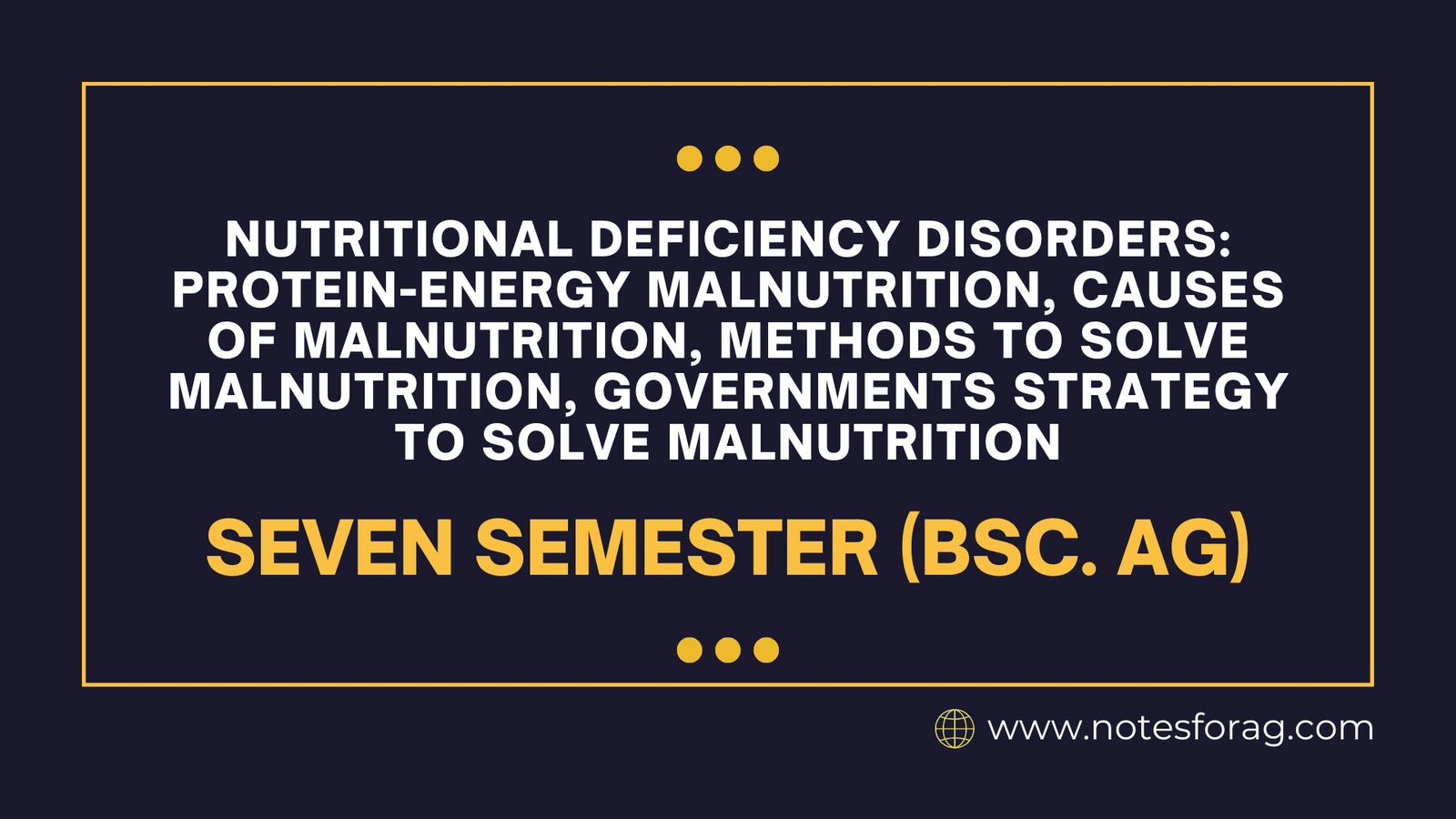What is Nutritional deficiency ?
A nutritional deficiency is a condition that arises when the body does not receive enough essential nutrients such as vitamins, minerals, proteins, carbohydrates, or fats required for optimal health, growth, and physiological functions. It can lead to various health issues depending on which nutrient is lacking and can be caused by inadequate dietary intake, absorption problems, or increased nutritional needs. A nutritional deficiency arise when the body lacks essential nutrients needed for proper functioning, which can lead to various health issues.
Simply,Nutritional deficiency occurs when the body lacks essential nutrients needed for proper growth, development, and functioning.
Table of Contents
Malnutrition arises due to nutritional deficiency for optimal functioning, leading to various health issues. It primarily affects children, pregnant women, and those in low-income areas. A significant form of malnutrition is protein-energy Malnutrition (PEM), a condition caused by extreme shortages of protein and calories. PEM is particularly harmful, as it hinders physical growth, cognitive development, and immunity, making the body more prone to illness.
Protein-Energy Malnutrition (PEM)
PEM includes severe conditions like Kwashiorkor and Marasmus:
Kwashiorkor
Due to a significant lack of protein, Kwashiorkor causes swelling (edema), muscle weakness, liver enlargement, and lowered immunity. It is common in children who consume enough calories but insufficient protein.
Marasmus
This condition is caused by an overall lack of calories and protein, resulting in severe weight loss, muscle wasting, and a weak, frail appearance.
Both forms of PEM have serious health consequences, including slowed growth in children and decreased energy and immunity.
Causes of Malnutrition
Malnutrition has various root causes, including:
Poverty
Limited income reduces access to nutritious foods, especially in regions with widespread poverty.
Food Insecurity
Many people lack a steady supply of food, leading to periodic hunger or reliance on low-quality, nutrient-poor foods.
Poor Dietary Habits
Even in wealthier areas, diets high in processed foods can result in nutrient deficiencies.
Lack of Knowledge
Without information on balanced diets, people may unknowingly eat meals lacking in essential nutrients.
Health Conditions
Certain illnesses, like digestive issues, prevent proper nutrient absorption and lead to malnutrition.
Solutions to Malnutrition
Various strategies can help address malnutrition:
Nutrition Education
Teaching communities about balanced diets, food preparation, and the importance of various nutrients empowers people to make healthier choices.
Supplement Programs
Providing supplements like iron, iodine, and vitamin A helps address specific nutrient deficiencies, particularly in children and pregnant women.
Food Fortification
Adding essential vitamins and minerals to everyday foods (such as rice, salt, or flour) ensures broader access to nutrition, even in areas with limited food variety.
Support for Agriculture
Educating communities in sustainable farming and providing resources to grow nutrient-dense crops enable them to produce their own healthy foods.
Community-Based Programs
Local healthcare workers and organizations can deliver education, supplements, and resources directly to families, ensuring that support reaches those in need.
Government Approaches to Combat Malnutrition
Governments play a critical role in reducing malnutrition through policies and initiatives aimed at enhancing food security and access to healthy foods. Key strategies include:
School Meal Programs
Free or subsidized school meals ensure children receive at least one nutritious meal daily, supporting both their growth and learning.
Health and Nutrition Awareness
Public health campaigns promote knowledge of healthy eating and nutrition, reducing malnutrition across communities.
Conditional Cash Support
Governments provide financial aid to low-income families, often requiring it be used for essentials like food and healthcare, enabling access to nutritious meals.
Food Subsidies
Making staple foods and essential nutrition items more affordable through subsidies helps lower-income families meet daily dietary needs.
Partnerships with NGOs
Many governments collaborate with non-governmental organizations (NGOs) to provide aid and nutritional support in remote areas, ensuring vulnerable populations receive assistance.
Overall, malnutrition is a critical health issue with significant impacts on long-term well-being, particularly for children and marginalized groups. Addressing malnutrition requires combined efforts from individuals, communities, and governments to improve access to nutritious foods, provide education, and establish policies that make healthy foods affordable. When communities, governments, and organizations unite, they can make significant strides in reducing malnutrition and fostering healthier populations. Maintaining a balanced diet and being aware of your nutritional needs can help prevent nutritional deficiency. If you have specific concerns, it’s always best to seek professional advice.
Frequently Asked Questions (FAQ)
What is a nutritional deficiency?
A nutritional deficiency occurs when the body lacks essential nutrients needed for proper functioning, which can lead to various health issues.
How are nutritional deficiencies diagnosed?
Diagnosis often involves:
Reviewing dietary habits.
Conducting blood tests to measure nutrient levels.
Assessing symptoms and medical history.
Related Articles

